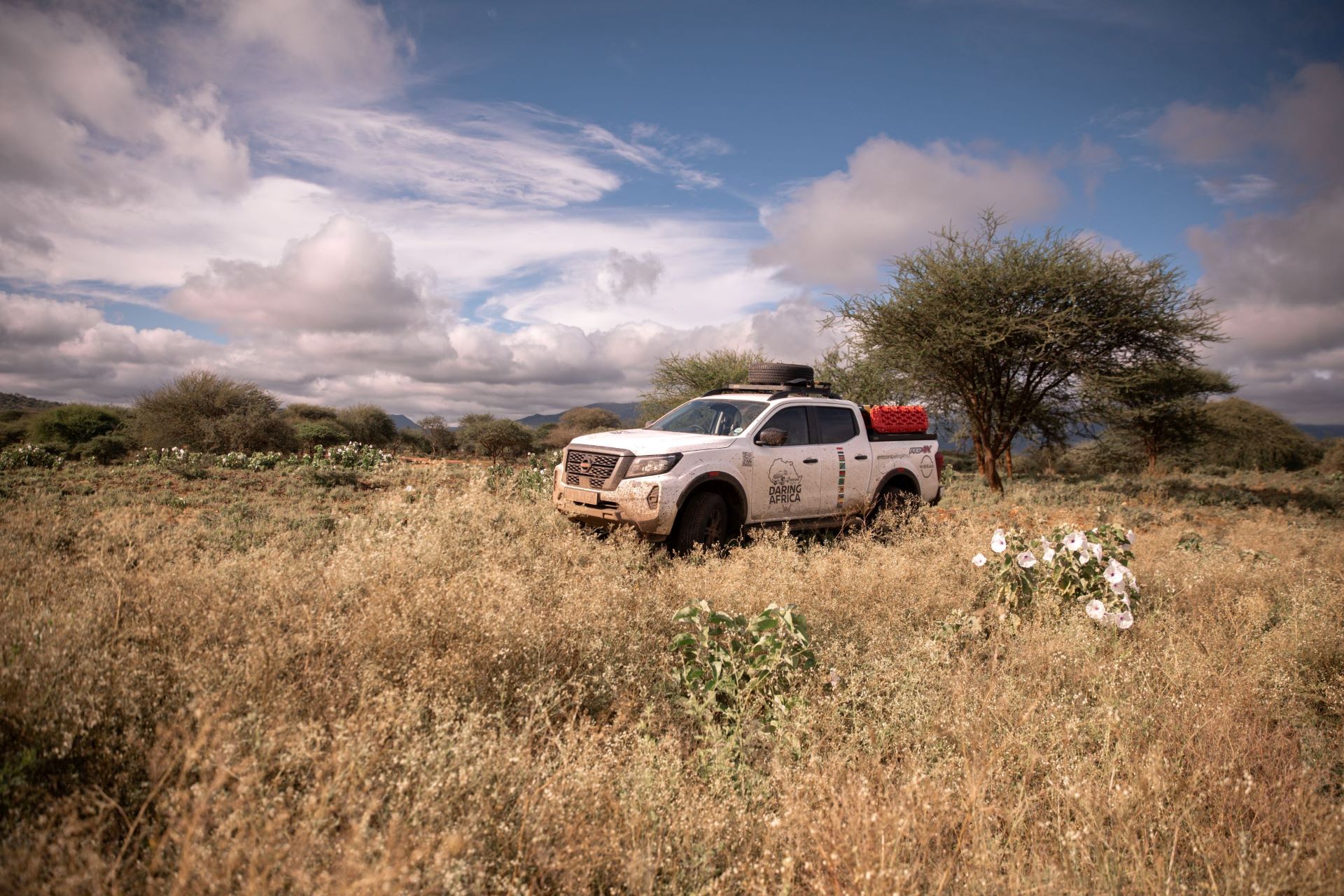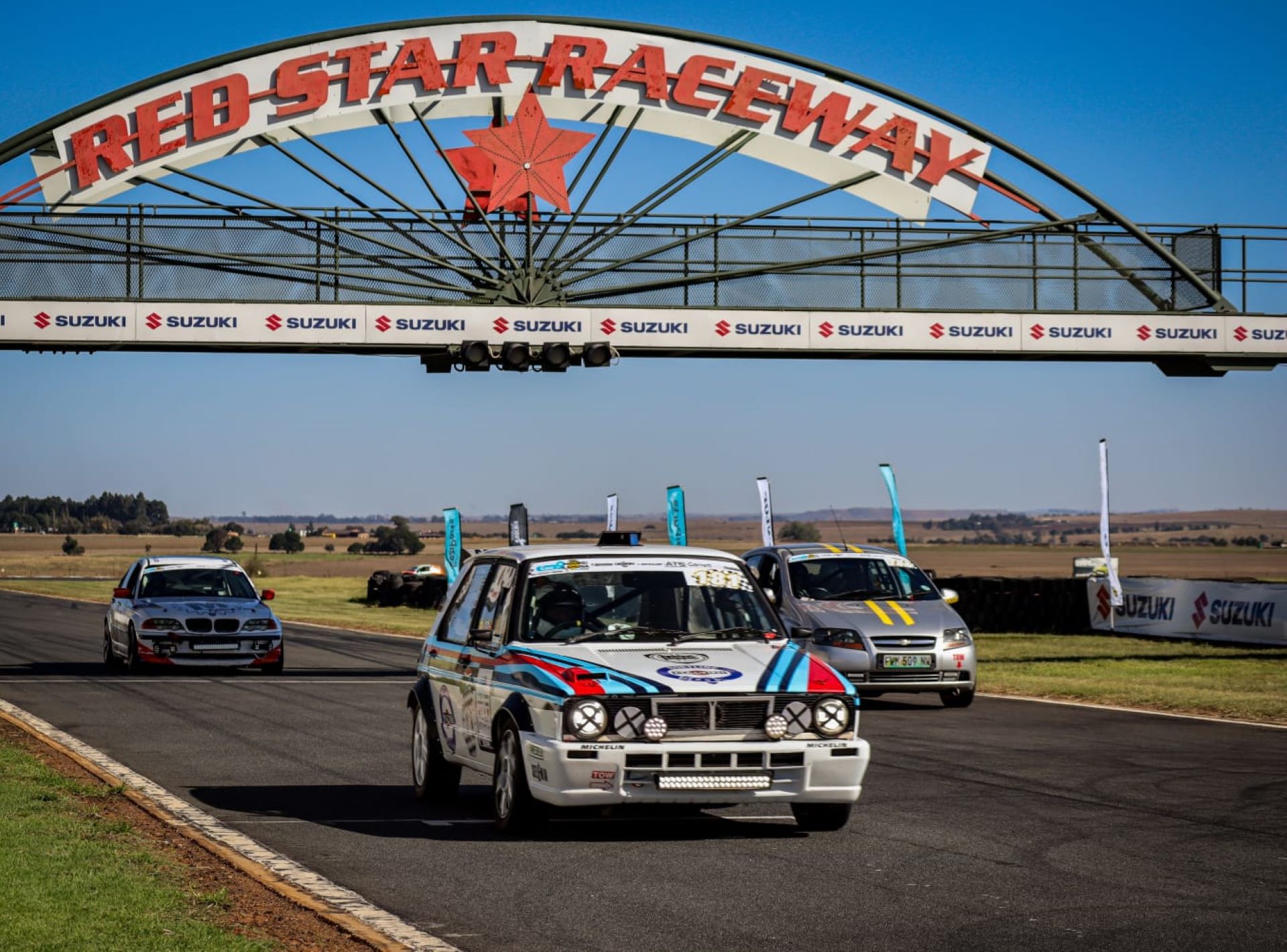Chassis and braking system: Effortlessly superior, dynamic and agile
- AMG RIDE CONTROL sports suspension including air suspension
- ACTIVE CURVE SYSTEM for active roll stabilisation
- Permanent all-wheel drive with 40 : 60 power distribution
- AMG speed-sensitive sports steering and AMG high-performance braking system
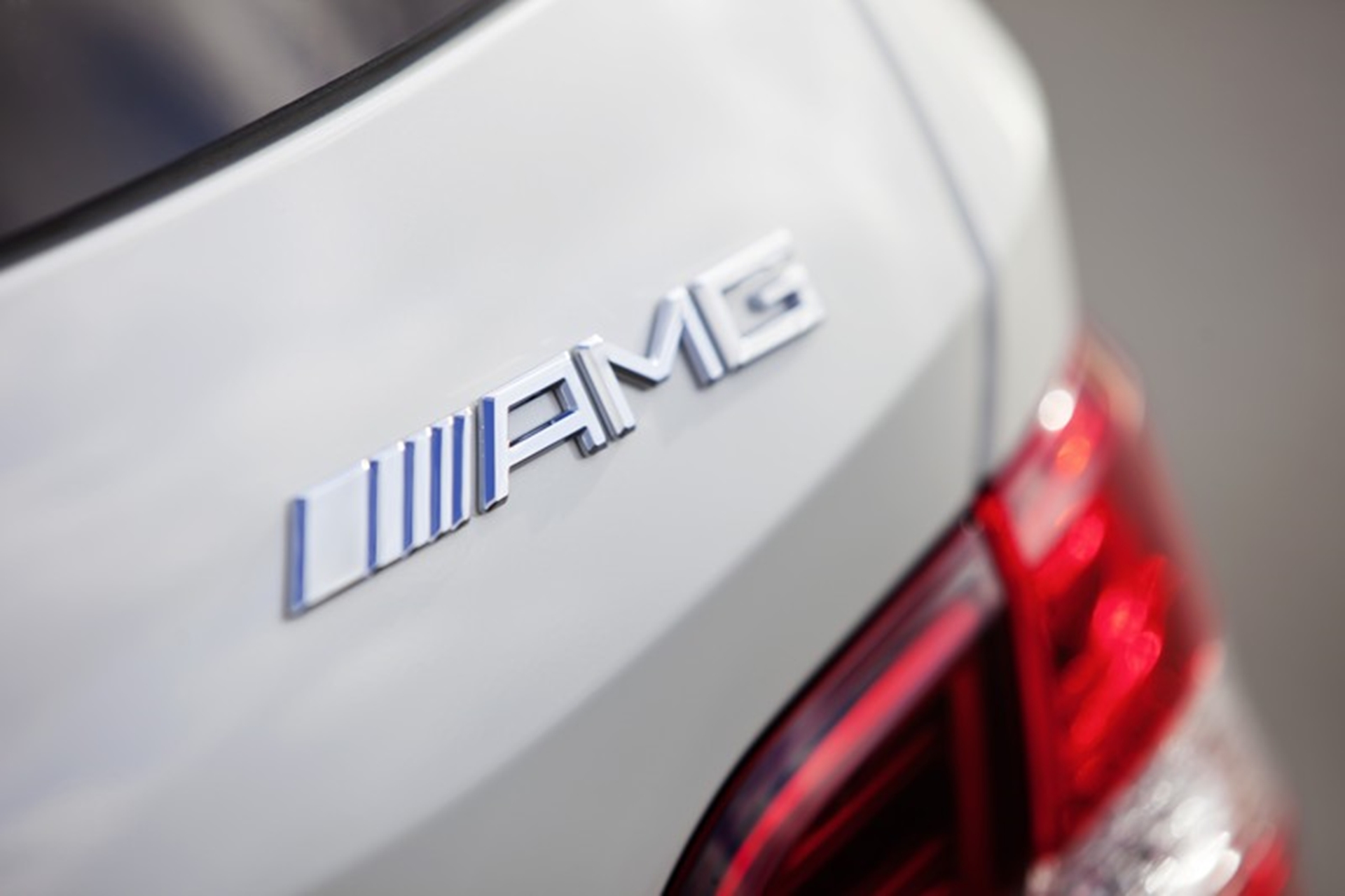 The driving feel in the ML 63 AMG is characterised by effortless superiority, thrilling driving dynamics and hallmark Mercedes comfort – thanks largely to the powertrain as well as the chassis, steering and braking system. Only the range-topping AMG model features the exclusive combination of AMG RIDE CONTROL sports suspension with AIRMATIC package, Adaptive Damping System (ADS) and ACTIVE CURVE SYSTEM as standard.
The driving feel in the ML 63 AMG is characterised by effortless superiority, thrilling driving dynamics and hallmark Mercedes comfort – thanks largely to the powertrain as well as the chassis, steering and braking system. Only the range-topping AMG model features the exclusive combination of AMG RIDE CONTROL sports suspension with AIRMATIC package, Adaptive Damping System (ADS) and ACTIVE CURVE SYSTEM as standard.
The double-link front suspension and multi-link rear suspension are equipped with AMG-specific air spring struts, while the fully load-bearing air suspension system is speed-sensitive. At speeds above 70 km/h, the body is lowered by ten millimetres to reduce drag and increase driving stability. When the suspension is in “Sport plus” mode, the body is 10 millimetres lower than in “Comfort” or “Sport” mode. What’s more, the AIRMATIC package compensates for variations in the vehicle load and driving conditions and also functions as a level control system. Away from the road, the air suspension allows additional ride heights to enhance off-road capability – the ground clearance can be increased by up to 60 millimetres. The driver can raise or lower the body at any time whilst the engine is running using the rotary control in the centre console.
Adaptive Damping System (ADS) with “skyhook” algorithm
The Adaptive Damping System (ADS) adapts the damping forces at each wheel based on the current requirements. Depending on the driving situation, it reduces the body movement caused by the wheels using a “skyhook” algorithm so as to ensure optimum ride comfort and outstanding handling safety. This adaptation takes place extremely quickly and fully automatically, although there is a switch which allows the driver to set the damper characteristics manually.
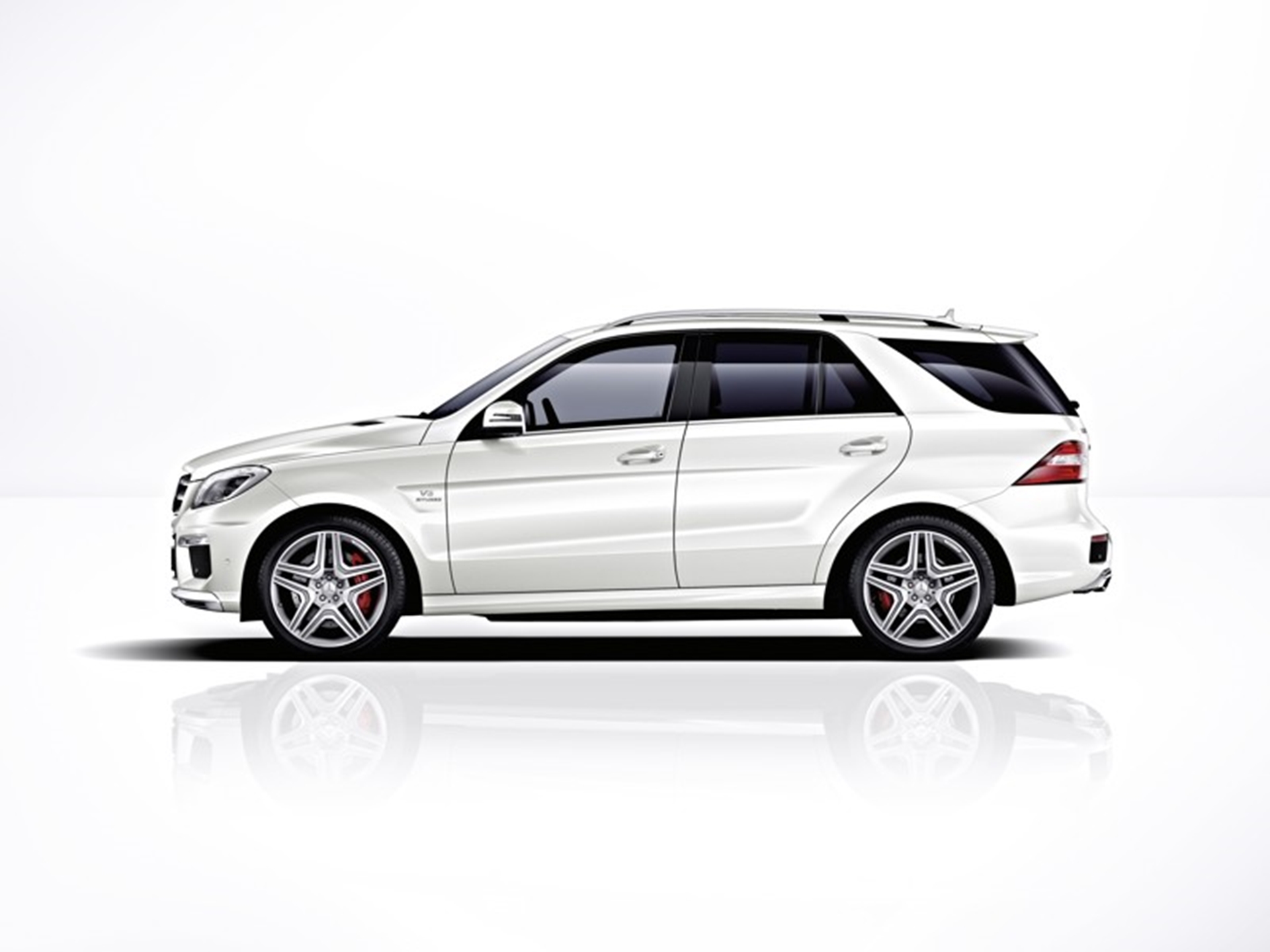
On the ML 63 AMG, the air suspension and the Adaptive Damping System work closely together with the ACTIVE CURVE SYSTEM. Active anti-roll bars on the front and rear axles control the body roll automatically depending on the lateral acceleration, road speed and the position of the switch (“Comfort”, “Sport” or “Sport plus”). The ACTIVE CURVE SYSTEM compensates for the roll angle of the body through bends, so delivering significant improvement in both agility and driving pleasure. At the same time the system increases driving stability and thus safety, especially and importantly at high speeds. Improved ride comfort both on winding stretches of road and on the straight is a further benefit of the ACTIVE CURVE SYSTEM. The control strategies in detail:
- Comfort is improved when driving straight ahead as the rotary actuators decouple the two halves of the front and rear anti-roll bars in this situation, meaning that the anti-roll bars are “open” and do not react to a stimulus on just one side, such as bumps or potholes.
- Increased ride comfort and more dynamic handling when cornering, because the system actively influences the anti-roll bars’ torsional moments and twisting angles. The anti-roll bars’ torsional moment furthermore remains constant in response to a stimulus on one side, such as is the case when driving over a pothole on the outside of the bend. Thanks to the individual control at the front and rear axles, distribution of the roll momentum can be varied, allowing the self-steering properties to be actively adapted to the prevailing driving situation. The handling characteristics are adjusted for extra agility when driving along country roads and for even greater stability on the motorway. To enhance driving dynamics, the ML 63 AMG has a larger anti-roll bar on the rear axle.
The key componentry of the ACTIVE CURVE SYSTEM comprises a belt-driven hydraulic pump and an oil reservoir in the engine compartment, as well as a valve block and active anti-roll bars at both the front and rear axles. In contrast to a passive anti-roll bar, the active variant is split into two in the middle, and the two halves are connected with one another by means of hydraulic rotary actuators. Using the CAN signals relayed to it by pressure sensors and a lateral acceleration sensor, the electronic control unit regulates the hydraulic pressure.
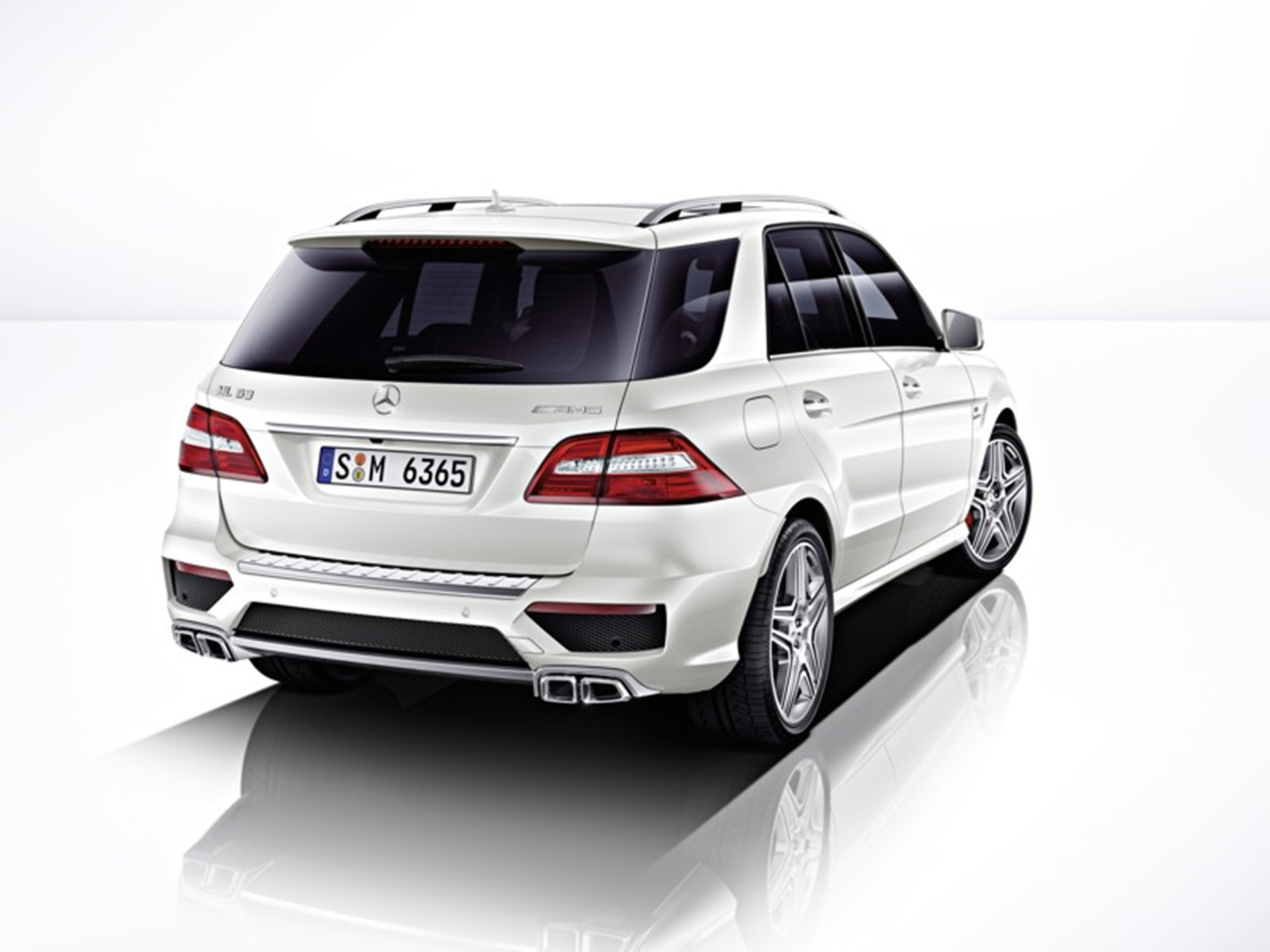
The complex workings of the ACTIVE CURVE SYSTEM
The hydraulic pump feeds oil to the system from the oil reservoir. The pressure control valves and directional control valves integrated into the valve blocks at the front and rear axles set the desired pressure and twist the active anti-roll bars in the appropriate direction for the driving situation. Inside the hydraulic rotary actuators that are built into the active anti-roll bars there are six oil-filled chambers, three of which are pressurised for each direction of travel, i.e. a left or right-hand bend. The front valve block additionally assumes the task of distributing the oil flow between the two axles, irrespective of load.
40 : 60 power distribution
As on the previous model, a specially designed transfer case distributes the engine power to the front and rear axle at a ratio of 40 : 60. This rear-heavy power distribution enhances agility when cornering at speed. The transfer case in the 4MATIC permanent all-wheel-drive system is directly flange-mounted on the 7G-TRONIC.
Variable: AMG speed-sensitive sports steering
The high level of agility is also down to the new electromechanical AMG speed-sensitive sports steering. With its variable servo assistance which adapts to the current suspension mode, it makes for extremely dynamic handling on bends. In suspension mode “C” or “S”, the AMG speed-sensitive sports steering has a comfortable feel, providing a higher level of steering assistance. In “S+” mode, on the other hand, the driver will discern stiffer, more sporty steering assistance with higher steering torque – for enhanced response and steering precision.
In addition to more precise steering and a more comfortable feel at the wheel, the new electromechanical power steering offers a range of additional advantages. Power assistance remains available when the engine is stationary, for example – whereby an algorithm ensures that the engine is not prompted to start up in ECO start/stop mode when the driver is merely moving the steering wheel while the vehicle is at a standstill. The new steering system has also enabled implementation of the “Active Parking Assist” automatic parking function. In addition, the electromechanical AMG speed-sensitive sports steering also makes an important contribution to efficiency, since the steering assist function only requires power when the driver actually steers. This enables further potential fuel savings to be achieved.
In the new steering system the steering gear and the supporting servo-motor form a single compact unit and are mounted as previously on an extremely rigid and lightweight integral support frame, made of high-strength steel, which is positioned in front of the wheel’s centre line. The high-performance control unit processes a variety of parameters captured by the sensors – including vehicle speed, steering angle, steering angle speed, lateral acceleration and also understeer/oversteer characteristics – and in a split second calculates the forces which the driver needs to input into the steering in different driving situations – from parking to high-speed motorway driving. Active damping enhances the feeling of safety when driving straight ahead at high speed. What’s more, the AMG-specific elastokinematics at the front axle make for improved steering precision.
AMG high-performance braking system, 265/45 R 20 tyres
The new AMG high-performance braking system minimises stopping distances, optimises sensitivity and offers high resistance to fading. Ventilated and perforated brake discs all round – 390 x 36 mm (front) and 345 x 26 mm (rear) – ensure optimum thermal capability and outstanding deceleration. Six-piston fixed callipers are fitted at the front axle, while the rear axle has single-piston combined floating callipers. If the AMG Performance package is ordered, all the callipers are painted red. Start-off assist and the HOLD function make hill-starts easier for the driver.
Standard equipment for the ML 63 AMG includes 5-spoke AMG light-alloy wheels in 9 x 20 format. The wheels, painted titanium grey with a high-sheen finish, are shod with 265/45 R 20 tyres. Exclusive optional extras from the AMG Performance Studio include 295/35 R 21 tyres on 5-twin-spoke AMG light-alloy wheels in 10 x 21 format.
4ETS, DSR und ESP® trailer stabilisation
Unlike the other M-Class versions, the ML 63 AMG is not available with the ON&OFFROAD package. Nevertheless, the range-topping model is well equipped for light off-road use. The electronic traction system 4ETS in combination with ASR (acceleration skid control) provides good grip, even
on slippery surfaces, while the standard-fit DSR (Downhill Speed Regulation) automatically keeps the vehicle at the speed programmed using the cruise control stalk.
ESP® trailer stabilisation offers customers who order the optional trailer coupling increased safety when towing a trailer: this additional ESP® function detects the trailer when the electrical connector plug is connected to the towing vehicle. ESP® trailer stabilisation uses the ESP® sensors and counteracts possible “fishtailing” of the trailer at speeds above 65 km/h by applying the brakes alternately on the individual front wheels. In most cases, this braking is sufficient to completely eradicate the fishtailing and so prevent further danger. In the event of excessive fishtailing, however, the engine torque is also reduced, and the vehicle is braked at all four wheels so as to reduce the speed from the critical level as quickly as possible.
The towing capacity of the ML 63 AMG is 3050 kg (braked) or 750 kg (unbraked).
